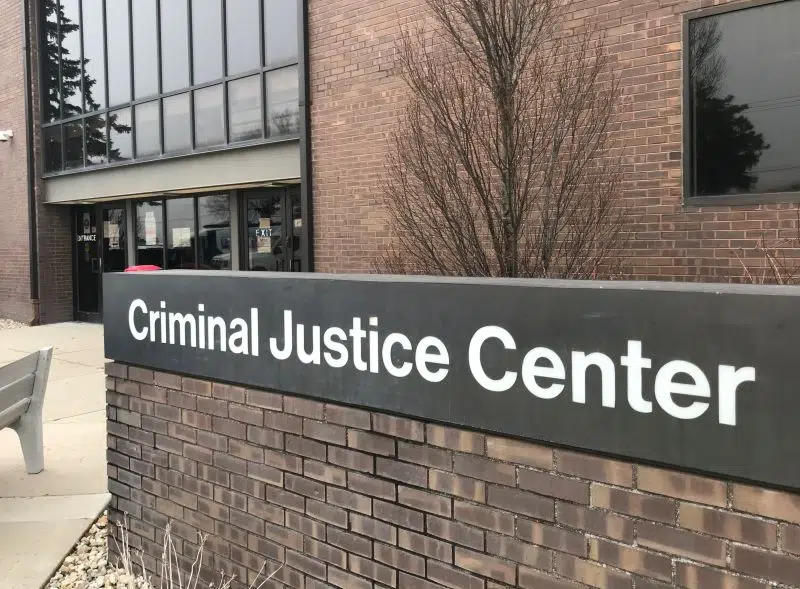Thirty-eight year old Donald Fredres of Sandwich had gunshot residue on his left hand the day after his former parents-in-law were shot and killed and his ex-wife was shot at. A forensic scientist testifying for the prosecution this afternoon said that doesn’t prove when Fredres fired a gun or that he fired one at all. It’s possible he touched something that gunshot residue landed on. Public Defender Ryan Hamer zeroed in on the limits of what gunshot residue testing shows.
Forensic scientist Kevin Gillespie said Illinois State Police standards prefer that testing for gunshot residue happen within six hours of when a gun is used. Samples weren’t taken from Fredres’s hands until some 14 hours had passed after the murders of 62-year olds Brenda and Gregory Barnes in their home near Sheridan. They were found dead on the evening of March 16, 2021. Fredres was found at the edge of a farm field the near the village the next morning. The samples to look for gunshot residues were taken at noon.
Fredres’s clothing wasn’t tested for the residue at all. Gillespie said it’s normal not to test someone’s clothing when tests on the person’s hands already prove that he or she has had contact with lead, barium, and antimony powder that comes out when a gun’s inner workings strike the bullet.
The Sandwich man’s fingerprints weren’t found on a gun magazine or shell casings collected at the crime scenes. However, his car was in the driveway at his ex-wife’s house, which was riddled with bullets. And Fredres was wearing a camouflage hoodie and blue jeans when he was arrested. He matched the description of the man who’d gone not just to his ex-wife’s house on the night of the crimes, but also to the place she used to live to look for her, according to witnesses who have testified so far.
Prosecutors showed security camera video of a man exchanging gun magazines at a Rural King store in Plano on the day of the crimes. The store manager helped police find the video based on the time and register information on a receipt found at Fredres’s apartment in Sandwich. But the employee who handled the exchange said he wouldn’t be able to identify Fredres in person now because it’s been more than a year.
Like the person in the videos, Fredres had very short hair when he was arrested. His hair is much longer now. The person in the videos is wearing a mask in compliance with pandemic rules, so comparing faces could be tricky.
The weapon Fredres is accused of using is a 9-millimeter semi-automatic handgun. Hamer questioned Crime Scene Investigator Robert Telford about letting a son of the Barneses take some revolvers out of their home while it was still an active crime scene. Telford said as far as he knew, the guns weren’t used in the crime. Assistant State’s Attorney Greg Sticka asked Telford about the differences between the types of guns. Telford explained a revolver doesn’t eject shell casings like those found at the home.
Jurors heard LaSalle County deputy Keith Pinney read a written letter he found in the field where police arrested Fredres. It’s signed Donald Fredres, Jr. and tells of troubles relating to his ex-wife, parents, boss, and landlord. In the letter, Brenda Barnes is accused of setting up her daughter with another man, breaking up their family, and turning his parents against him. A supervisor is blamed for harassing him at work for three-and-a-half years. A landlord is accused of taking his things. The letter ends with expletives, “Please put in newspaper I took my own life. No weak a– COVID s—.” When Hamer questioned Pinney, the deputy said he’s not familiar with Fredres’s signature.
Testimony resumes tomorrow. Judge H. Chris Ryan told jurors earlier this week, they would likely begin deliberations on Thursday. He told them today, it now looks like Friday.
